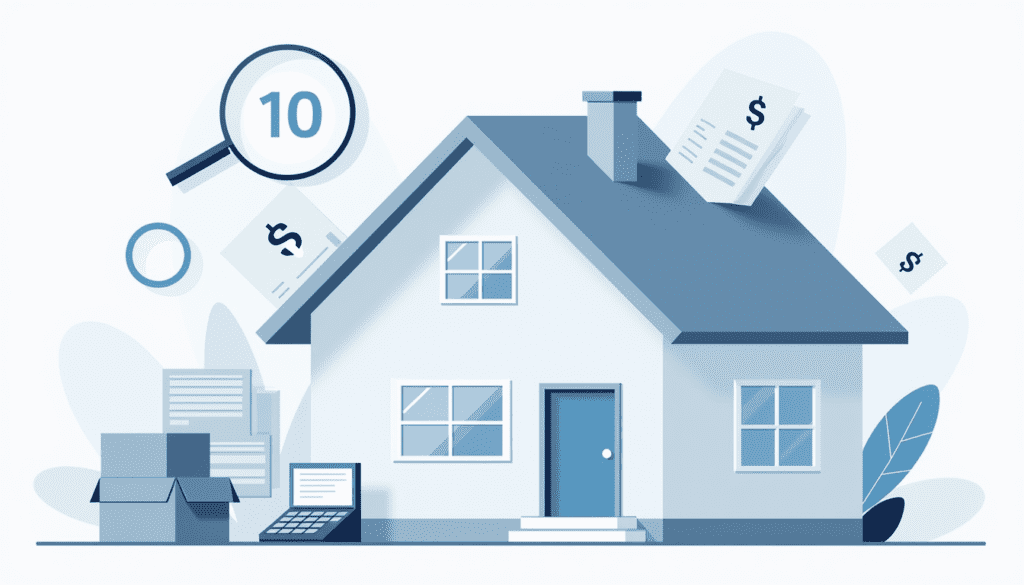Buying a home is one of the biggest financial commitments most people will ever make. While most buyers prepare for the obvious expenses like the down payment and monthly mortgage, there are many hidden costs that can surprise even the savviest homeowners. These extra expenses can easily add thousands of dollars to your budget if you’re not careful.
At Home Finance Tools, our goal is to help you make smarter, more informed financial decisions. In this guide, we’ll break down 10 hidden costs of buying a home—and more importantly, how to budget for each one.
1. Closing Costs
What it is:
Closing costs are the fees and charges associated with finalizing a real estate transaction. These can include lender fees, title insurance, escrow fees, recording charges, and more.
How much to budget:
Typically 2% to 5% of the home’s purchase price. On a $350,000 home, that’s $7,000 to $17,500.
How to budget:
Ask your lender for a Loan Estimate early in the process. This document outlines estimated closing costs. Use our Mortgage Calculator to factor these costs into your budget.
2. Property Taxes
What it is:
Property taxes are levied by your local government and vary widely depending on your state, county, and the assessed value of your home.
How much to budget:
National averages range from 0.5% to over 2.5% of your home’s value annually.
How to budget:
Use our Property Tax Estimator to get a quick estimate based on your state’s average rate.
3. Homeowners Insurance
What it is:
This insurance protects your home and belongings from damage or loss due to events like fire, theft, or natural disasters.
How much to budget:
Typically ranges from $800 to $1,500 annually, depending on location and coverage levels.
How to budget:
Shop around and compare quotes. Bundle with auto insurance for discounts.
4. Private Mortgage Insurance (PMI)
What it is:
If your down payment is less than 20%, your lender may require PMI to protect their investment.
How much to budget:
PMI typically costs 0.5% to 1% of the loan amount annually.
How to budget:
Use our Mortgage Affordability Calculator to factor in PMI and determine how much home you can really afford.
5. Homeowners Association (HOA) Fees
What it is:
If your home is in a community governed by an HOA, you may be responsible for monthly or annual fees covering amenities and maintenance.
How much to budget:
Anywhere from $100 to $1,000+ per month, depending on the neighborhood.
How to budget:
Ask your real estate agent for the HOA fee schedule. Read the bylaws to understand what’s covered.
6. Utility Setup and Ongoing Costs
What it is:
Moving into a new home means setting up water, electricity, gas, internet, and possibly trash service—often with activation fees.
How much to budget:
Initial setup may cost $200–$500, with monthly bills ranging from $200 to $500+, depending on the size and efficiency of the home.
How to budget:
Ask the seller for past utility bills to get an estimate. Create a monthly utility allowance in your budget.
7. Maintenance and Repairs
What it is:
Unlike renting, homeowners are responsible for all maintenance and repairs—big or small.
How much to budget:
Experts recommend setting aside 1% to 3% of your home’s value annually. That’s $3,000 to $9,000 for a $300,000 home.
How to budget:
Create a home maintenance fund. Prioritize inspections to uncover issues before you buy.
8. Furniture and Appliances
What it is:
Moving into a new space often requires new furniture, appliances, curtains, and more to make it feel like home.
How much to budget:
This varies widely but can easily reach $5,000–$15,000 or more, especially if starting from scratch.
How to budget:
Make a “move-in essentials” list. Focus on the basics first and upgrade over time.
9. Moving Costs
What it is:
Whether you hire professionals or DIY, moving isn’t free. You’ll pay for trucks, packing materials, labor, and travel expenses.
How much to budget:
Local moves average $1,000–$2,000; cross-country moves can exceed $5,000.
How to budget:
Get quotes from multiple moving companies or calculate DIY costs (fuel, rental truck, helpers, etc.).
10. Remodeling or Customization
What it is:
You may want to change flooring, paint, landscaping, or remodel kitchens and bathrooms to fit your style.
How much to budget:
Cosmetic upgrades can cost $2,000 to $10,000+. Full renovations may run into tens of thousands.
How to budget:
Prioritize “must-haves” and get estimates before committing. Look for energy-efficient upgrades that reduce future utility bills.
🧠 Final Thoughts: Plan Ahead and Protect Your Finances
When you’re buying a home, it’s easy to focus on the down payment and mortgage. But these hidden costs can sneak up fast—and stretch your budget beyond what you expected. By understanding and planning for these expenses upfront, you’ll avoid unpleasant surprises and set yourself up for long-term financial success.
🧰 Tools to Help You Budget Smarter
At Home Finance Tools, we’re here to help you every step of the way. Try these free resources:
- ✅ Mortgage Calculator – Estimate your monthly payment
- ✅ Mortgage Affordability Tool – See how much house you can afford
- ✅ Property Tax Estimator – Quickly calculate your annual tax
💬 Have Questions?
Thinking of buying a home and want personalized advice? Contact us or explore our blog for more tips on mortgages, budgeting, and smart financial planning.

